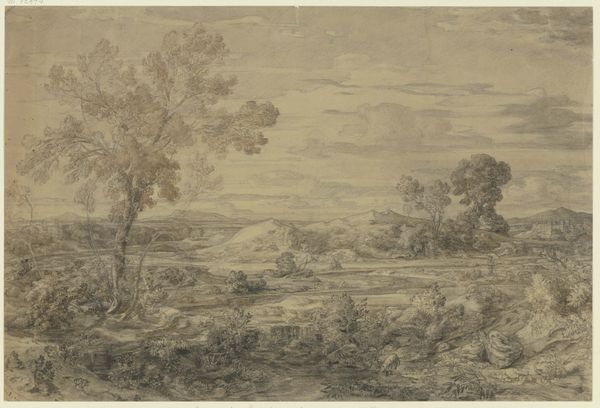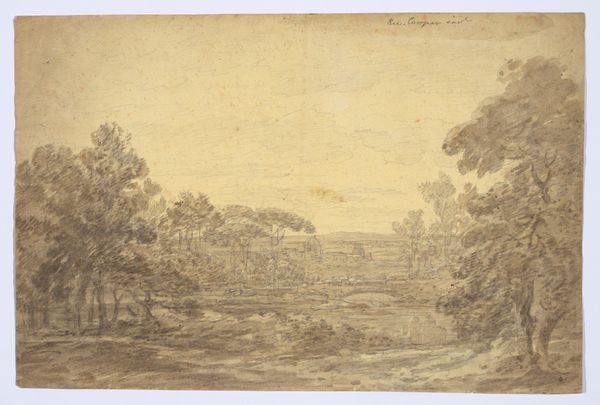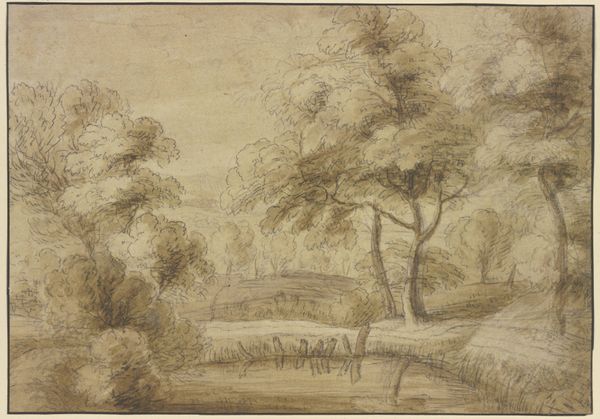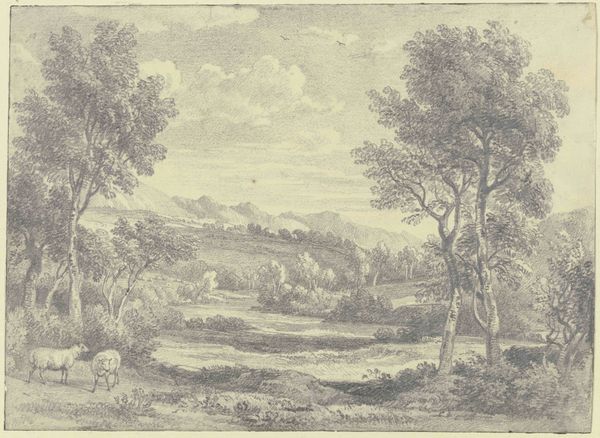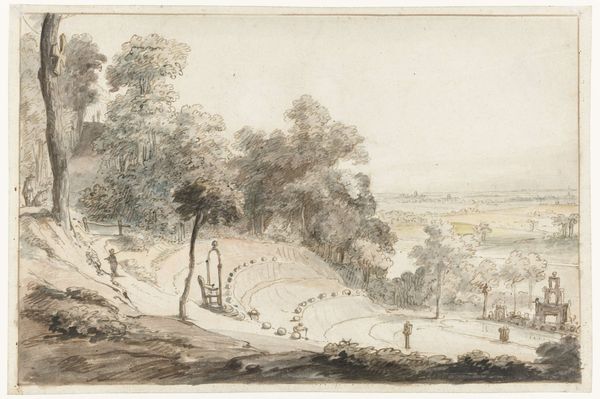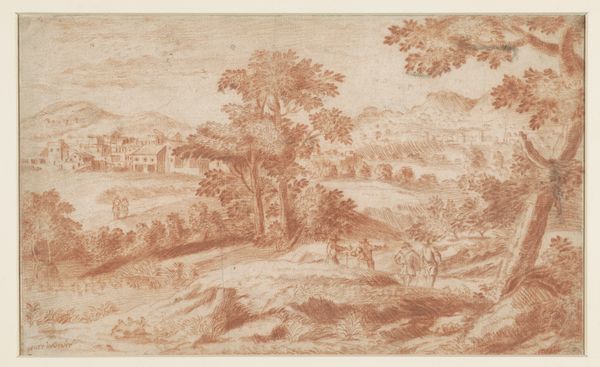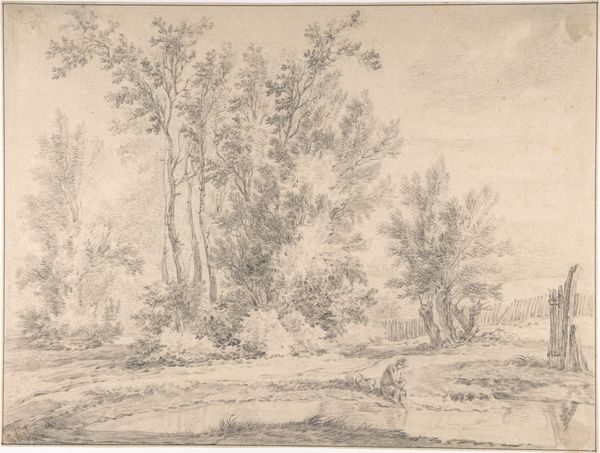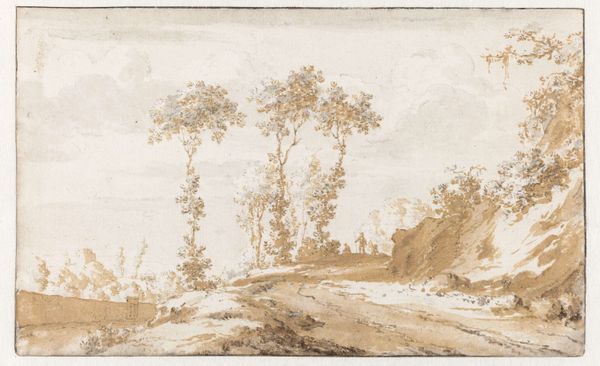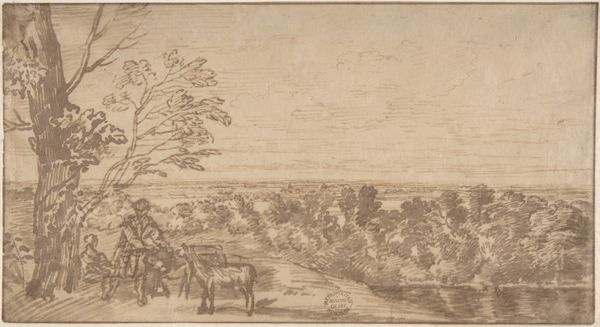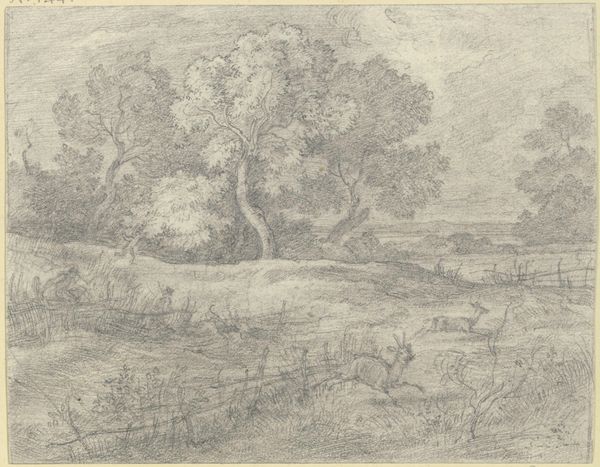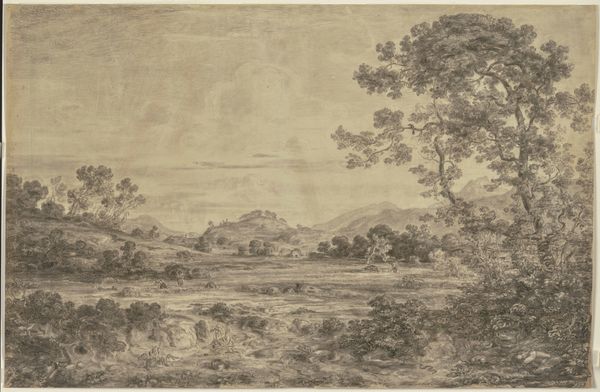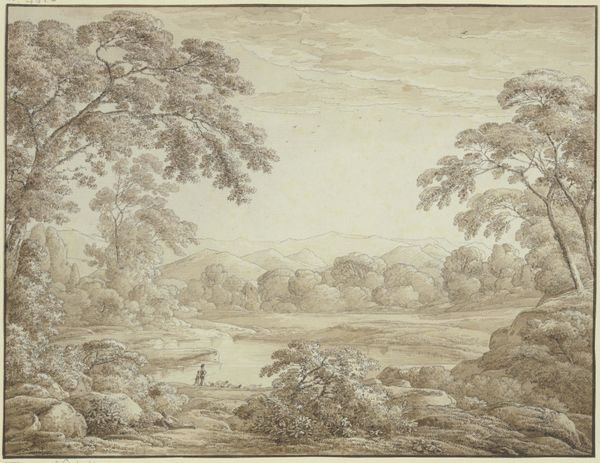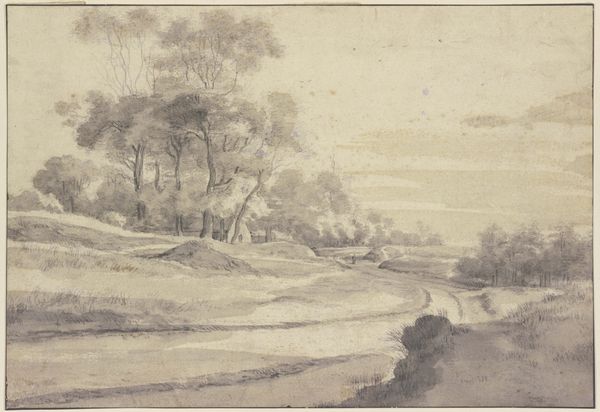
drawing, print, paper, ink, pencil
#
drawing
#
baroque
# print
#
pencil sketch
#
human-figures
#
landscape
#
river
#
figuration
#
paper
#
ink
#
pencil drawing
#
coloured pencil
#
pencil
#
chiaroscuro
#
cityscape
Dimensions: 7 13/16 x 10 11/16 in. (19.8 x 27.1 cm)
Copyright: Public Domain
Editor: Here we have an ink and pencil drawing entitled "River Scene," from the 17th century, currently residing at the Metropolitan Museum of Art. I find the muted tones and seemingly serene subject matter somewhat deceptive. The use of chiaroscuro, that dramatic contrast between light and shadow, creates a tension that suggests more than just a simple landscape. What layers do you see at play here? Curator: I'm immediately drawn to how this seemingly pastoral scene is, in fact, constructed through a specific lens of power and observation. Ask yourself: Who is granted the leisure to observe and depict this landscape? Who labors within it? In 17th century landscapes, these seemingly idyllic representations often glossed over the realities of land ownership, resource extraction, and even the exploitation of labor. The figures in the foreground, barely defined, could represent various social classes, all experiencing vastly different realities tied to this river. How might this composition reproduce or challenge societal hierarchies? Editor: That’s a fascinating point! The anonymity of the artist also makes it difficult to discern any intentional commentary, right? Do we even know their background or privilege? Curator: Exactly. Their social location informs how they perceive and present this "River Scene". Consider the broader historical context. The Baroque period, while known for its ornate grandeur, was also a time of significant social and political upheaval. The light and shadow become more than just aesthetic devices; they symbolize knowledge and obfuscation, the revealed and concealed aspects of the lived experiences from this period. The sketchiness might be an appeal to authenticity or immediacy, yet is this access available for everyone represented in this scene? Editor: I never thought about landscapes being a projection of power, especially in how they erase or highlight certain truths of the time. I guess it forces me to rethink my understanding of landscape art entirely! Curator: And that's precisely the point. To challenge the accepted narrative, deconstruct the visual language, and excavate the hidden stories embedded within. Landscapes are never just passive backgrounds, are they?
Comments
No comments
Be the first to comment and join the conversation on the ultimate creative platform.
